Tips to Help You Get Active
Return to Overview PageBenefits
Why should I be physically active?
Physical activity is an important step you can take to improve your health and quality of life. Regular physical activity may help prevent or delay many health problems. Being active may help you look and feel better, both now and in the future.
So what’s stopping you? Maybe you think that physical activity is boring, joining a gym is costly, or fitting one more thing into your busy day is impossible.
This information may help you identify and beat your roadblocks to physical activity! Learn tips to create a plan to get moving or add more activity to your life.
What are the benefits of regular physical activity?
Physical activity has many benefits.
Improve your health
Regular physical activity may help prevent or delay type 2 diabetes, heart disease, high blood pressure, and stroke. If you have one of these health problems, physical activity may improve your condition.
Physical activity also may help you
- reduce your risk for certain cancers, including colon and breast cancer
- maintain your weight by balancing the number of calories you use with the number of calories you take in. To lose weight, you’ll need to use more calories than you take in.
Improve your quality of life
Regular physical activity also may improve your quality of life right now. Become more active and you may enjoy a happier mood, less stress, and a stronger body.
Who should be physically active?
Everyone can benefit from physical activity. Health benefits are possible for adults and youth from a range of racial and ethnic groups studied, and for people with disabilities.

The Federal Government developed physical activity guidelines for Americans (PDF, 14.2 MB) for the amount, types, and intensity of physical activity you need to help you achieve many health benefits across your life span.
Starting Physical Activity
How much and what kinds of physical activity do I need?
Some physical activity is better than none. You can start slowly and build up from there.
If you are a healthy adult, the Physical Activity Guidelines for Americans, 2nd edition (PDF, 14.2 MB) , advise you to make aerobic and strengthening activities part of your regular routine. If you have a disability that keeps you from some activities, talk with your health care professional about types of physical activity that might work well with your abilities. If you have a health problem such as heart disease, high blood pressure, or diabetes, ask your health care professional about the types and amounts of physical activity that may work for you.
Aim for at least 150 minutes per week of moderate-intensity aerobic activity.
Walking fast, jogging, dancing, or other types of aerobic activities make your heart beat faster and may cause you to breathe harder. Try to be active for at least 10 minutes at a time without breaks. You can count each 10-minute segment of activity toward your physical activity goal. Aerobic activities include
- biking (Don’t forget the helmet.)
- swimming
- brisk walking
- wheeling yourself in a wheelchair or engaging in activities that will support you such as chair aerobics
Try to do aerobic activities at a moderate intensity. Do the “talk test” to make sure you are exercising at a pace that you can maintain. You should be able to speak a few words in a row, but you should not be able to sing.
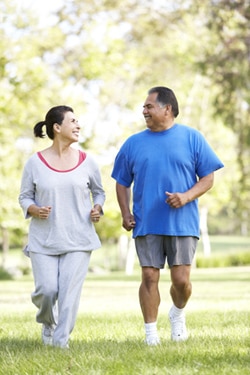
Aim for at least 300 minutes per week to gain more benefits.
You may need at least 300 minutes per week of aerobic activity if your goal is to lose weight or to keep it off. Adding a brisk walk after lunch, dinner, or when your schedule permits may be one way to boost the amount of aerobic activity in your life.
Do strengthening activities twice per week.
Activities that make you push or pull against something may improve your strength and balance.
Build and maintain bone and muscle strength.
To help strengthen your whole body, work all major muscle groups, including those in your legs, back, abdomen, chest, shoulders, and arms. Doing 2 to 3 sets for each muscle group twice per week may help. Even 1 set of strength training offers benefits.
Try different activities to find ones you enjoy and to work different parts of your body, such as
- lifting weights
- working with resistance bands
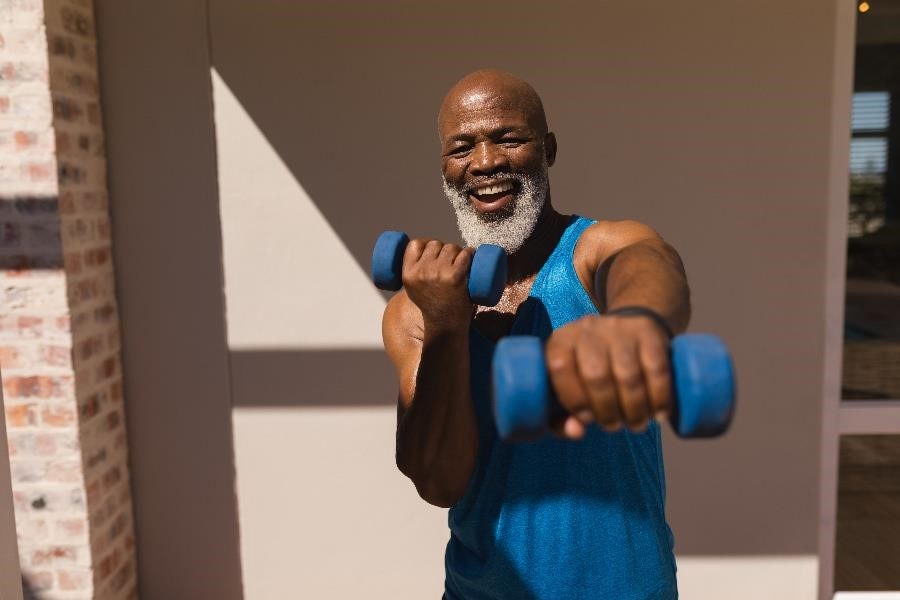
Improve your balance.
Activities that build strength in your lower body may improve your balance. Try activities that work your ankles, feet, and lower legs.
Pilates and yoga may improve balance, muscle strength, and flexibility. You can also try tai chi or practice standing on one leg, if you are able to do so.
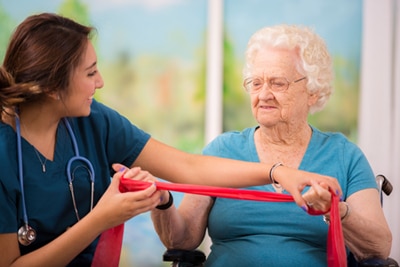
Take breaks from being still.
Recent studies suggest that long periods of inactivity may be linked to health problems such as diabetes, heart disease, and stroke. Add motion to your day. Download an app to your phone, computer, or other device to remind yourself to take breaks.
Routine tasks such as sweeping, mopping, vacuuming, and yard work can also be part of your physical activity plan.
How can I start to be active?
Pick an activity you enjoy.
Create a list of the activities you would like to do, such as walking, aerobics, tennis, wheelchair basketball, or taking a class at a fitness or community center. To increase your activity level, add an activity that sounds fun and try it out. You are more likely to stay active if you choose activities you enjoy.
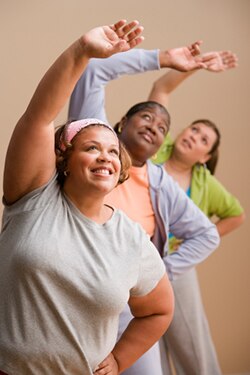
Start slowly and add a little at a time.
The idea of being active at least 150 minutes per week may seem like too much at first. Start by moving for 10 minutes a day. Every few weeks, add 5 to 10 minutes until you are active at least 30 minutes most days.
Set a goal, add it to your calendar, and do it.
Setting goals and having a plan to realize them may help you stick with a physical activity routine.
- Set specific short-term goals that you can track. For example, instead of saying “I’m going to be more active this week,” set a goal of walking 30 minutes a day on 3 days this week.
- Think of the days and times you could do the activity, such as first thing in the morning, during lunch breaks, after dinner, or on Saturday afternoon. Look at your calendar, phone, or computer to determine the days and times that work best and commit to those plans in writing. Also, set your phone to send reminders to help you stay on track.
How can I overcome physical activity roadblocks?
Starting a physical activity program and sticking with it may be easier than you think. You can overcome these common roadblocks to physical activity.
I don’t have time.
Are work, family, and other demands making it hard to be active? Try the tips below for adding physical activity to your daily routine. Remember, every little bit counts.
- Do 10 minutes of physical activity at a time. Spread bursts of activity throughout your day.
- Add a 15-minute walk or activity that you will stick with during your lunch break or after dinner.
- Make activity part of your daily routine. If it is safe and you have time, walk a flight of stairs or, instead of driving, walk or bike with your child to school. If you have a physical disability, you can also use aids to build activity into your daily routine.
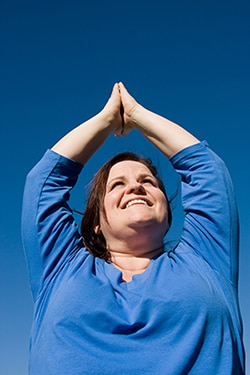
I’m not that motivated or interested.
Do you find it hard to get moving? Does working out seem like a chore? Here are some ideas that might keep you moving:
- Switch it up. Try a new activity, such as dancing or water aerobics, to find out what you enjoy most.
- Make it social. Involve your family and friends. Physical activity is good for them, too. Plan fun physical activities that allow you to spend quality time together and stay on track.
- Meet a friend for workouts or train together for a charity event.
- Join a class or sports league where people count on you to show up.
- No matter what age your kids are, find an activity you can do together. Dance to music or play sports such as basketball or tennis, in a wheelchair if needed.
- Seek support. Who will inspire you to get moving and help you reach your goals?
Make a list of the people—your partner, brother, sister, parent, kids, or friends—who can support your efforts to be physically active. Give them ideas about how they can help, such as praising your efforts, watching your kids, or working out with you.
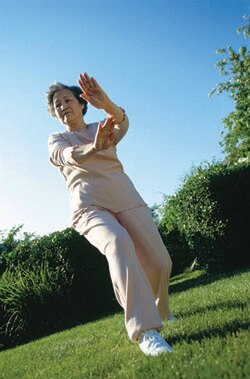
It’s too cold, hot, or rainy.
You can reach your fitness goals in any weather.
- Wear the right gear. A rain jacket, sun hat and sunscreen, or winter clothes will protect you and help you stick to your plans.
- Find a place to stay active indoors. Download an app to your phone or other device to be active at home, or take an indoor class when the weather is bad. Your local community center or place of worship may offer low-cost options.
I’m afraid it will cost too much.
Getting physical activity doesn’t have to cost a lot of money.
- Check out your local recreation (rec) or community center. These centers may cost less than other gyms, fitness centers, or health clubs. Find one that lets you pay only for the months or classes you want, instead of the whole year. If you have physical disabilities, ask if the center offers activities that suit your abilities.
- Choose physical activities that do not require special gear or advanced skills. Turn on some music and host a dance party with friends and family.
Prepare to break through your roadblocks.
What are the top three things keeping YOU from being more active? Use your phone, calendar, or computer to make a list of any barriers that come to mind and how you can overcome them. For example:
Barrier: I don’t have anyone to watch my kids.
Solution: Be active with your child. You can take walks together or play games such as “catch” or basketball. You can also do seated activities such as wheelchair volleyball. Lifting or carrying a baby not only works your muscles, but helps you bond with your child. Some rec centers offer “baby and me” classes. Another option is to find child care. Ask whether your rec center has child care, or find a friend or family member you trust who is willing to watch your child while you exercise. Some people take turns watching each other’s children.
Keep Moving
If you have made an effort to fit more physical activity into your day, that is great! If you need motivation to keep it going, it may help to—
Track your progress.
Seeing your progress over time may help you keep at it. You can track your progress on paper, online, or with an app for your phone or computer. Monitor the type of activity you did, how long you did it, and how you felt. Use this information to chart your progress, overcome setbacks, stay motivated, and set new goals.
If you're looking for an online tool, the NIH Body Weight Planner lets you tailor your calorie and physical activity plans to reach your personal goals within a specific time period.
Another way to see your progress is on a smartphone, mobile device, or computer. You can download a fitness app that allows you to enter information and gauge your effort.
Devices such as pedometers and fitness trackers can help you count steps, calories, active minutes, hours of sleep, and more. You wear most of these devices on your wrist like a watch or clipped to your clothing. Some of the devices can also track your heart rate and how far you walk or run during a certain period of time.
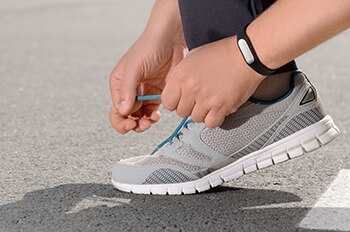
Be safe.
Be sure to play it safe, regardless of which activities you choose. An injury could cause a setback, keep you from meeting your physical activity goals, and affect how active you are in the future.
- Start slowly. If you are starting a new physical activity program, go slowly at first. Even if you are doing an activity that you once did well, begin little by little to lower your chance of injury or burnout.
- Stay hydrated. Remember to drink liquids. Water is an option. Sports beverages have a lot of sugar, will add extra calories, and aren’t necessary for most moderate activity.
- Listen to your body. Take it easy at first and see how you feel before trying more challenging workouts. Stop if you feel out of breath, dizzy, faint, or nauseated, or if you have chest pain or any other type of pain.
- Address existing health issues. If you have an injury or health problem such as diabetes or heart disease, talk with your health care professional about how to add physical activity to your life safely.
- Think ahead and plan for setbacks. Have options ready in advance in case of bad weather, injury, or other unusual events. If you do get off track, don’t give up. Regroup and focus on meeting your goal again as soon as you can.
Keep it going and build on your progress.
Choosing physical activities you enjoy and that match your interests and abilities may help you stick with them for the long run. You can try new activities, too. To add variety
- do low-impact aerobics or water aerobics
- walk on a treadmill or outdoors
- try seated aerobics or wheelchair basketball
- go on a bike ride (Don’t forget the helmet.)
Increase physical activity slowly over time.
As you reach your goals, think about how you can up the intensity or time spent being active. To reduce injury risk, increase physical activity gradually. First, increase the number of minutes you engage in an activity per session or the number of times that you do an activity each day or each week. For example, if you are walking 3 days a week, add another day. Later, up the intensity by walking faster or jogging.
Little by little, raise the number of times you do each strength-training activity. For instance, first work up to 2 sets of 10 to 15 repetitions with a 1-pound weight. When that is easy for you, consider trying the activity with a 2-pound weight. Make changes slowly. If you add weight, do fewer repetitions until you get used to the greater intensity.
As you build stronger muscles, consider new strengthening activities, too. Do moves that use your body weight and test your upper body strength, such as push-ups. Start with bent knee push-ups if your arms or stomach aren’t yet strong enough to support your full body weight.
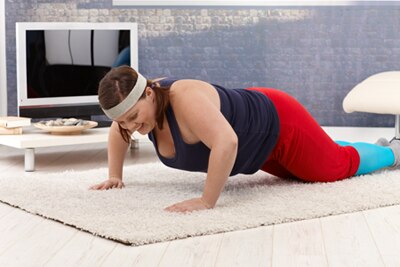
Reward yourself.
Give yourself a nonfood reward for meeting your goals. Think of rewards that may motivate you to do even more, such as trying a new, healthy recipe with friends; a fitness class at your home, work, or place of worship; or joining a local, low-cost recreation center.
Clinical Trials
The National Institute of Diabetes and Digestive and Kidney Diseases (NIDDK) and other components of the National Institutes of Health (NIH) conduct and support research into many diseases and conditions.
What are clinical trials and are they right for you?
Clinical trials are part of clinical research and at the heart of all medical advances. Clinical trials look at new ways to prevent, detect, or treat disease. Researchers also use clinical trials to look at other aspects of care, such as improving the quality of life for people with chronic illnesses. Find out if clinical trials are right for you.
Watch a video of NIDDK Director Dr. Griffin P. Rodgers explaining the importance of participating in clinical trials.
What clinical trials are open?
Clinical trials that are currently open and are recruiting can be viewed at ClinicalTrials.gov.
This content is provided as a service of the National Institute of Diabetes and Digestive and Kidney Diseases
(NIDDK), part of the National Institutes of Health. NIDDK translates and disseminates research findings to increase knowledge and understanding about health and disease among patients, health professionals, and the public. Content produced by NIDDK is carefully reviewed by NIDDK scientists and other experts.
The NIDDK would like to thank:
Jessica L. Unick, Assistant Professor, The Warren Alpert Medical School of Brown University, Psychiatry and Human Behavior, The Miriam Hospital’s Weight Control and Diabetes Research Center

